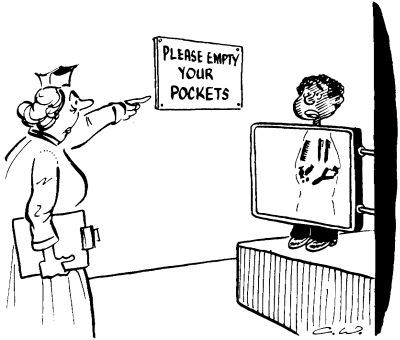Mass Radiography
|

|

Another Example
Mass Radiography
X-ray, photographs can be used to detect tuberculosis (TB). Mass X-ray is a
quick and cheap method. It allows everyone one who is in the area, or working at
a particular firm, to have their chests X-rayed at a mobile unit. It takes only
a few minutes and does not even require people to undress. But it is not
completely reliable. The photographs may show a mark (positive reaction) or
not (negative reaction). If a person has tuberculosis. there is a 99% chance
that it will show positive. If a person does not have tuberculosis, there is a
10% chance that the photograph will not be clear, and this will be taken as a
positive reaction. People showing a postitive reaction are asked to come
for another more reliable but more expensive test.
At present about 1 person in every 1000 has tuberculosis.
- Draw a tree diagram like that in Figure 1.
Instead of 'Drunk' write
'Has TB'.
Instead of 'Sober' write 'Hasn't TB'.
- In the boxes write the appropriate probabilities, based on the information
above.
Suppose 100000 people were examined.
- On your tree diagram, write the expected number of people to which each
branch refers.
- Draw an outline table like Table 1, labelling the rows 'Has TB' and
'Hasn't TB'. Use your answers to c to complete the table. Fill in the
appropriate total figures for the rows and columns.
Use your table to find the following:
- How many gave a negative reaction? How many of these had
tuberculosis?
- How many gave a positive reaction? How many of these did not have
tuberculosis?
e and f indicate two errors that can be
made.
- What are they? Which is the most serious error?
- If you were one of the 100000 people and you had a positive reaction, what
is the probability that you have tuberculosis?
|